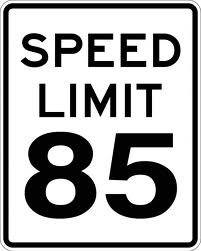The high speed toll road keeps having problems relating to not having enough paying customers.
SH 130 has not been the immediate success story its backers had hoped. Last week, lower-than-expected traffic revenue prompted credit ratings firm Moody’s Investors Service to severely downgrade the SH 130 Concession Company’s debt and warned that a default may not be far off. The project’s stumbles are likely to draw increased scrutiny of how Texas plans to fund future infrastructure projects, though local and state officials are working to distinguish SH 130 from other toll projects in the works.
Moody’s downgraded $1.1 billion of debt tied to the project by five notches, from B1 to Caa3, considered junk status. It’s the second time the firm has downgraded the project’s debt, following an earlier downgrade in April.
“Bottom line is we believe they have enough money for their December payment, but they do not have enough money for their June 2014 payment,” Moody spokesman David Jacobson said.
The threat of a default could prompt the SH 130 Concession Company, a partnership between Spain-based Cintra and San Antonio-based Zachry American Infrastructure, to refinance its debt next year or inject additional money into the project. TxDOT could view an ongoing cash-flow problem as reason to terminate its toll contract with the company decades ahead of schedule, according to Moody’s.
[…]
The consortium spent $1.3 billion to build the southern portion of SH 130, known as Segments 5 and 6. Combined with the publicly funded northern portion (Segments 1-4), SH 130 connects Georgetown to Seguin, providing a 90-mile bypass around San Antonio and Austin. TxDOT officials have expressed hope that the road would someday serve as a popular alternative to congested Interstate 35 for those driving through Central Texas. Backers, noting the 50-year contract with TxDOT, also predict that future development in Lockhart and other small towns along the toll road’s route would lead to increased traffic in the future.
But the road’s location — about 30 miles east of the most congested portions of Central Texas — was viewed as a challenge from the start. Most other toll projects around the state are similar to the MoPac Express in Austin, which is adding toll lanes to the median of a congested highway. At last week’s ceremony to celebrate the start of construction, Capital Area Metropolitan Planning Organization chairman Will Conley said the project’s location distinguishes it from SH 130.
“I think this project is fundamentally different,” Conley said. “[SH] 130, of course, is a greenfield project and, I think, more of a longer-term-type project. Whereas, the day this opens, this is going to impact an immediate need on MoPac.”
See here for more on the April downgrade. A big part of the problem here is that there’s very few people where SH 130 is. That’s by design, of course, since it was intended to be a low-traffic option, but it means almost no one hops on it because it’s convenient. You have to plan to take it. It’s difficult enough to get people to change habits when the alternative you propose is easy to use and right in front of them. Just getting to SH 130 means going miles out of your way. It’s not quite as far out a detour as I first thought – here’s a map; I’d forgotten how much I-35 veers to the east, which makes it fairly close to I-10 for the first thirty or so miles out of San Antonio – but even in San Antonio, it’s passing through lightly populated territory. The towns it passes through between San Antonio and Austin are much smaller than their I-35 counterparts, too – Seguin has about 25,000 people and Lockhart has about 11,000, while New Braunfels has 57,000 and San Marcos has 50,000. I guess the bet that the SH 130 investors were making is that the population will grow around the highway, and I’m sure eventually it will, but eastern San Antonio – I’m talking along I-10 outside Loop 410 – doesn’t look that much different to me today than it did 25 years ago when I left SA for Houston. There’s a bit more development out there, but it’s mostly industrial, not commercial or residential. You want that, go west and north. Maybe 25 years from now it’ll be more built up. I don’t think the SH 130 Concession Company can wait that long.


We have taken that road exactly three times. Once to see how much time it added/saved coming back to south Austin from Dallas, another time on the way to Tyler. I can’t imagine taking it to go to San Antonio, and another time when we were going to Lockhart.
It’s nowhere near anyone’s daily commute, and the one guy I know who was using it for his commute hit a deer at 90 miles an hour.
If they default, does the road revert to the state? If so and they want it to be used more, they could get rid of the tolls…
130 was always going to be a hard sell to highway users, though it might take some of the San Antonio to Dallas traffic if the incentives were good enough. But of course making it a toll road created a major disincentive, far canceling out the benefit of lighter traffic. In the end what needs to be done is to take the toll off 130 and put it on I-35 (at least for trucks). They are finally having to look at this option, despite all the legal complications it would entail.